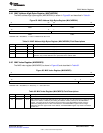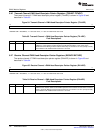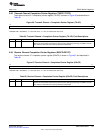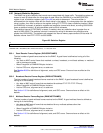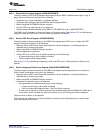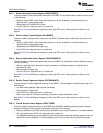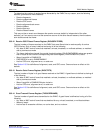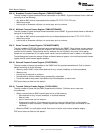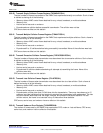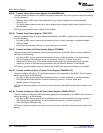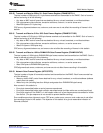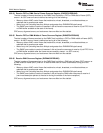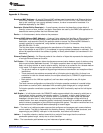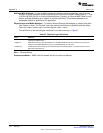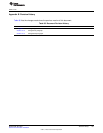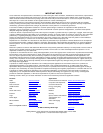
Appendix A
www.ti.com
Multicast MAC Address— A class of MAC address that sends a packet to potentially more than one
recipient. A group address is specified by setting the LSB of the first MAC address byte to 1. Thus,
01h-02h-03h-04h-05h-06h is a valid multicast address. Typically, an Ethernet MAC looks for only
certain multicast addresses on a network to reduce traffic load. The multicast address list of
acceptable packets is specified by the application.
Physical Layer and Media Notation— To identify different Ethernet technologies, a simple, three-field,
type notation is used. The Physical Layer type used by the Ethernet is specified by these fields:
<data rate in Mb/s><medium type><maximum segment length (×100m)>
The definitions for the technologies mentioned in this document are in Table 87.
Table 87. Physical Layer Definitions
Term Definition
10Base-T IEEE 802.3 Physical Layer specification for a 10 Mb/s CSMA/CD local area network over two pairs of
twisted-pair telephone wire.
100Base-T IEEE 802.3 Physical Layer specification for a 100 Mb/s CSMA/CD local area network over two pairs of
Category 5 unshielded twisted-pair (UTP) or shielded twisted-pair (STP) wire.
Twisted pair A cable element that consists of two insulated conductors twisted together in a regular fashion to form a
balanced transmission line.
Port— Ethernet device.
Promiscuous Mode— EMAC receives frames that do not match its address.
134
Glossary SPRUFL5B–April 2011
Submit Documentation Feedback
© 2011, Texas Instruments Incorporated



